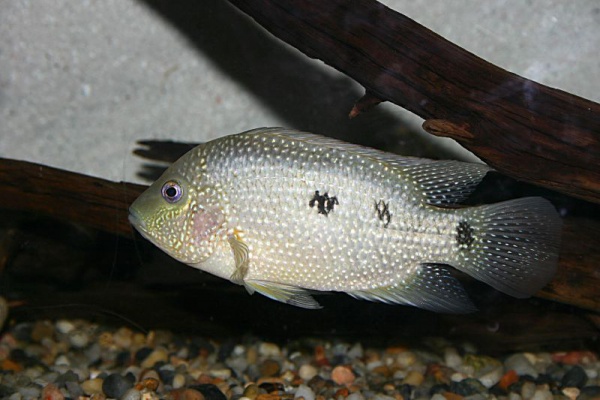Facts About Texas cichlid
The Texas cichlid, also known as the Rio Grande cichlid, is a freshwater fish endemic to the lower Rio Grande drainage in Texas and northeastern Mexico. This species, scientifically named Herichthys cyanoguttatus, belongs to the cichlid family and can grow to over 13 inches in length. It is renowned for its striking cream and turquoise spots, with adult males developing a distinctive nuchal hump on their heads. These fish thrive in water temperatures ranging from 68 to 82°F but are sensitive to rapid temperature changes.
Originally classified under the Cichlasoma genus, the Texas cichlid has been reclassified to the Herichthys genus due to its unique color patterns and breeding behaviors. These fish exhibit complex reproductive behaviors, characterized by extended periods of parental care. Mating pairs are monogamous, typically consisting of larger males and smaller females. Both parents actively participate in selecting and cleaning spawning sites before depositing eggs. They take turns caring for the eggs until they hatch into free-swimming fry.
The Texas cichlid's diet is omnivorous, comprising vegetable matter, detritus, insects, smaller fish, and fish eggs. They can also be opportunistic carnivores, feeding on small vertebrates and invertebrates. As an invasive species, Texas cichlids possess traits that contribute to their success, such as a high tolerance for saltwater and aggressive behavior, which can disrupt local food webs and impact native species.
In regions like Florida and Louisiana, Texas cichlids have infiltrated water bodies, adversely affecting native species and ecosystems. Controlling their population has been challenging due to their rapid breeding cycles and aggressive nature. Despite their invasive status, Texas cichlids are also sought after as sport fish and food fish in some areas, known for their taste and often caught using light tackle with live bait.

 Guatemala
Guatemala